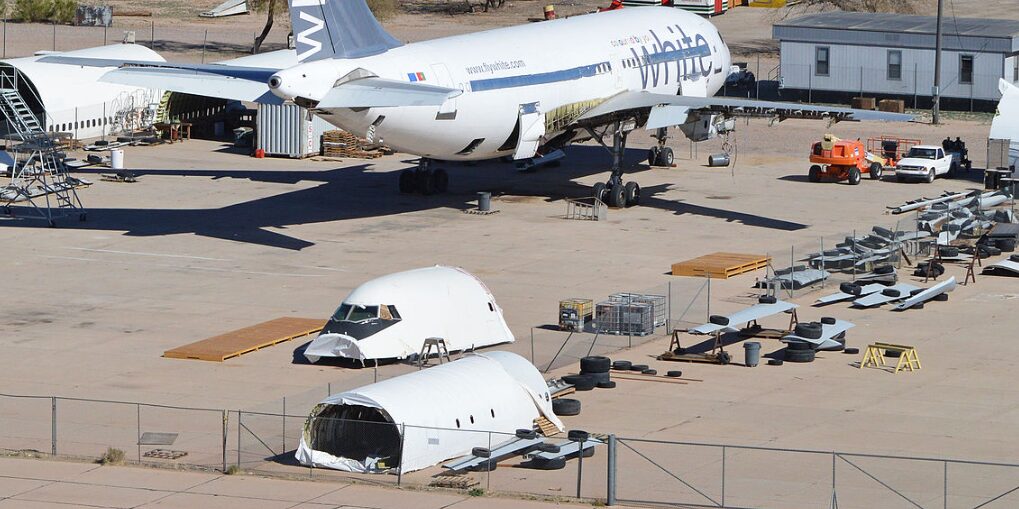Share Share Share Share Email The aviation industry is undergoing a significant transformation, not only in its quest to reduce greenhouse gas emissions but also in addressing the often-overlooked issue of electronic waste (e-waste). As aircraft become increasingly reliant on advanced digital systems, sensors, and connected technologies, the accumulation of outdated or non-functional electronic components is becoming a growing concern. To counter this, manufacturers and innovators are developing green aircraft technologies that not only improve fuel efficiency and reduce carbon footprints but also contribute to minimizing e-waste.
These innovations are shaping a more sustainable future for aviation by designing with longevity, modularity, and recyclability in mind. The E-Waste Challenge in Aviation Modern aircraft are essentially flying computers, embedded with intricate electronic systems for navigation, communication, diagnostics, entertainment, and safety. These systems evolve rapidly, often becoming obsolete before the airframes themselves are retired.

In a conventional design and operations model, such obsolescence results in frequent replacements and disposal of electronics , much of which ends up as e-waste. These components contain materials such as heavy metals and hazardous chemicals, requiring careful disposal to avoid environmental contamination. The global push toward greener aviation is now incorporating strategies to combat this electronic waste stream.
This includes rethinking how aircraft electronics are designed, maintained, upgraded, and disposed of, with sustainability integrated throughout the entire lifecycle. Modular and Upgradable Avionics One major innovation aimed at reducing e-waste is the development of modular avionics systems. Instead of replacing entire integrated systems when technology advances or a component fails, modular avionics allow individual units to be swapped or upgraded independently.
This reduces material waste and extends the useful life of both the individual components and the overall system. By enabling targeted upgrades, airlines can avoid the cost and waste associated with full-system replacements. Furthermore, modularity simplifies maintenance and recycling at the end of life, as parts can be more easily separated, assessed, and processed.
Lightweight Composite Materials with Embedded Electronics Innovators are exploring ways to integrate electronics directly into composite structures used in aircraft. For example, wiring and sensors can be embedded into carbon fiber panels or wings. These designs reduce the number of separate electronic units needed, cutting down on both weight and future e-waste.
While these systems are more challenging to recycle, researchers are developing composites that are easier to disassemble or process without destroying embedded components. The dual benefit of weight reduction—which improves fuel efficiency—and fewer standalone electronic parts means less material waste overall. Digital Twins and Predictive Maintenance Digital twin technology, which creates a real-time virtual model of an aircraft or its systems, is another significant innovation reducing electronic waste.
By continuously monitoring performance and simulating wear and tear, digital twins enable precise maintenance interventions. Components are replaced only when necessary, rather than on fixed schedules, reducing unnecessary disposal of functioning electronics. This predictive approach not only improves safety and performance but also cuts down on the premature replacement of avionics and sensors, extending their functional life and minimizing waste.
Eco-Conscious Cabin Electronics In-flight entertainment systems and passenger service units are also receiving a green makeover. Airlines are shifting toward wireless systems that reduce cabling and infrastructure, thereby minimizing overall material use. Portable and easily upgradeable devices are replacing bulkier, hardwired systems, making it easier to recycle or refurbish parts.
Some new systems even incorporate biodegradable casings or use recyclable polymers for their enclosures, ensuring that when these items are eventually decommissioned, they don’t contribute to long-term environmental pollution. Reusable and Remanufactured Components To extend the life of aircraft electronics and reduce waste, the industry is increasingly investing in remanufacturing. Decommissioned components are being refurbished, tested, and re-certified for use either in the same type of aircraft or as secondary components for training and non-critical functions.
This approach not only reduces the demand for new materials but also ensures that valuable rare earth elements and high-quality metals within the electronics are preserved for longer. It is a form of circular economy in practice, promoting reuse over disposal. Green Supply Chain Integration Sustainability efforts in aviation are also focusing on the supply chain.
Manufacturers are working with suppliers to ensure that components are produced with end-of-life considerations in mind. This includes using recyclable materials, minimizing the use of hazardous substances, and standardizing parts for easier sorting and processing when they are no longer in use. Supply chain transparency also enables better tracking of electronic components, facilitating responsible disposal or recycling.
As traceability improves, so does the potential for building a closed-loop lifecycle for aircraft electronics. Looking Ahead As the industry continues to push for carbon neutrality and sustainable operations, the emphasis on managing e-waste through green technologies is becoming a central priority. The next generation of aircraft is likely to incorporate smart systems that not only perform critical functions but also manage their own lifecycle, signaling when they can be reused, refurbished, or recycled.
In addition, regulatory pressure and consumer expectations are driving airlines and manufacturers to adopt more sustainable practices. Integrating e-waste reduction into these broader environmental goals enhances brand reputation and aligns with global sustainability commitments. Conclusion Innovations in green aircraft technology are redefining what sustainability means in aviation.
From modular avionics and predictive maintenance to recyclable materials and remanufacturing strategies, these advancements offer effective pathways to reduce the mounting issue of electronic waste. By designing smarter systems and embedding sustainability into the lifecycle of electronics, the aviation industry can take flight toward a cleaner, more responsible future—one where high-tech and environmental stewardship coexist in harmony. Related Items: e-waste , Green Aircraft Share Share Share Share Email Recommended for you Businesses Leading the Charge Against E-Waste Shaping Tomorrow: Computer Recycling and the Journey Towards Sustainable E-Waste Management Green Computing and E-Waste Management: A Winning Combination for a Sustainable Future Comments.
Technology

Innovations in Green Aircraft Tech to Reduce E-Waste

The aviation industry is undergoing a significant transformation, not only in its quest to reduce greenhouse gas emissions but also in addressing the often-overlooked issue of electronic waste (e-waste). As aircraft become increasingly reliant on advanced digital systems, sensors, and connected technologies, the accumulation of outdated or non-functional electronic components is becoming a growing concern. [...]The post Innovations in Green Aircraft Tech to Reduce E-Waste appeared first on TechBullion.














